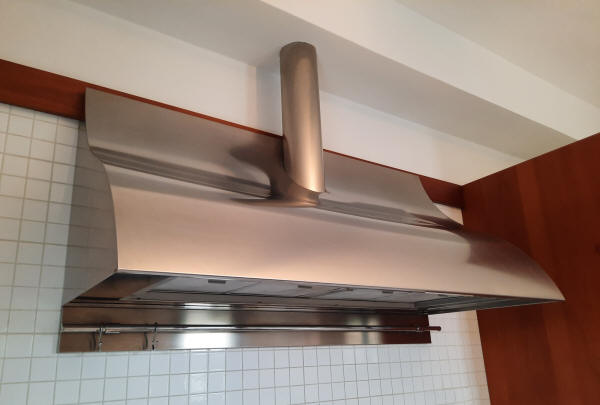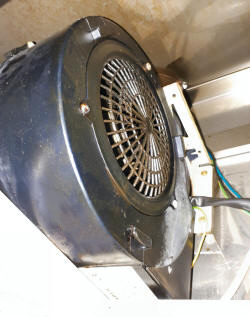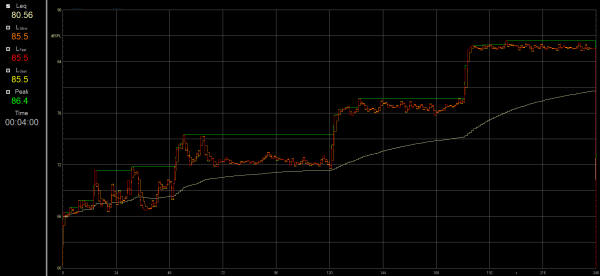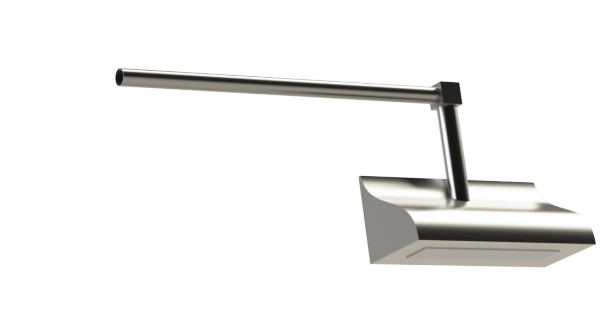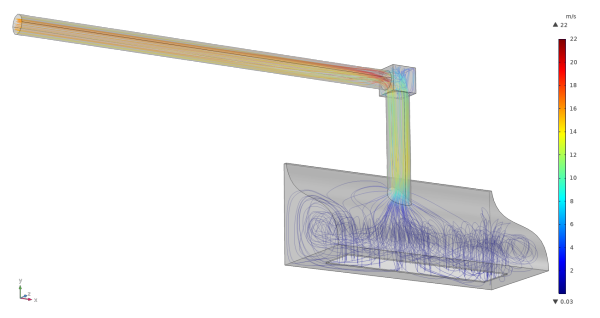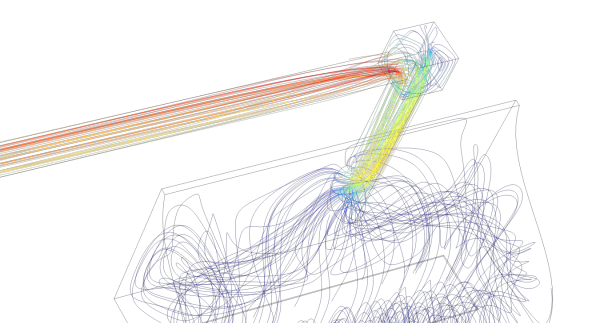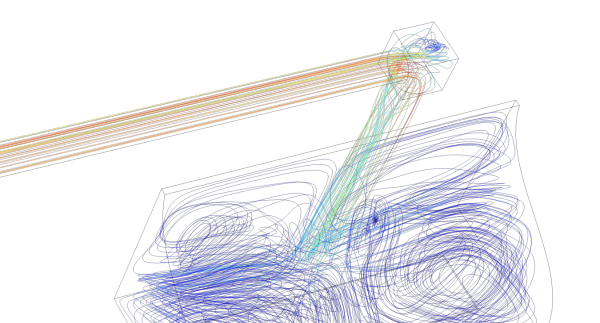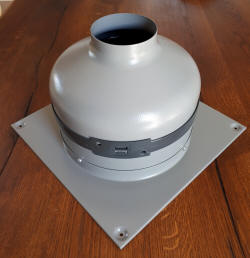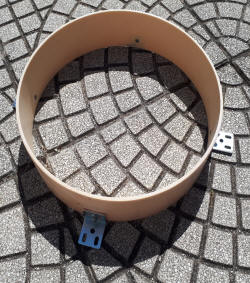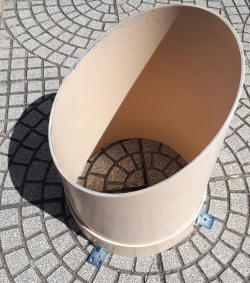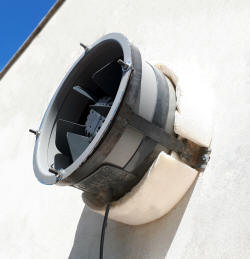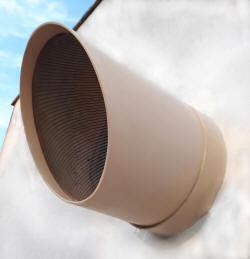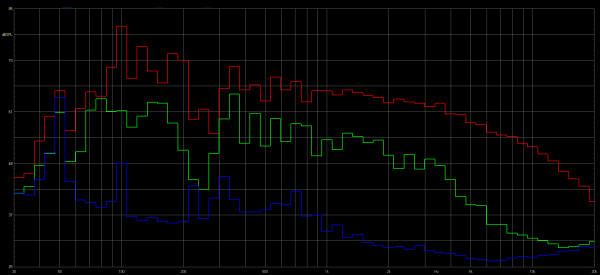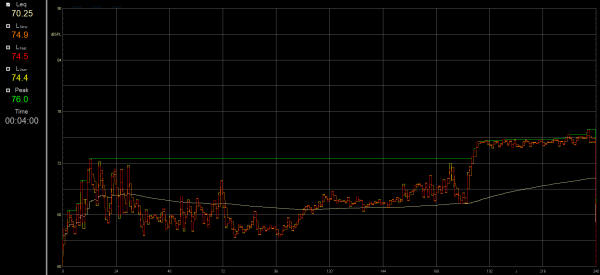 |
| CV | DESIGN | ART | AUDIO | CONTACT |
|
Cooker hood noise reduction modifying the fume extractor fan motor
Targets: reducing at least 8 dB of noise, improve performances, reducing power consumption, maintaining aesthetic appearance. The extractor hood is a 120x50x50cm inox and extracting fumes from an exit pipe of 2.7m total lenght
The extractor hood is equipped with an embedded tangential extractor fan motor, 220W @max power. The motor has 3 speeds: min, mid and max power.
The following sound pressure measurement shows equivalent levels integrated in time @1m in front of the hood structure, @1.5m from the floor. The microphone position is selected to measure both acoustical noise emission and mechanical noise transmission around the user position head. The total mesurement is 240 seconds divided in 4 equal steps of 60 seconds: 60s of background noise + 60s of min power + 60s of mid power + 60s of max power. @1m the measured level @max power is 79.7 dBSPL the button to switch-on the fan motor is positioned in front of the microphone, for this reason when the fan start to work (after 1minute of background noise measurement) there is a peak. The peak amplitude is always different because it is a mechanical switch and depending mainly on the manual force we impress to it and also from other variable conditions involved in this action.
The near filed measurement is done between the extractor hood and the cooktop, @1.3m from the floor the near field measured peak @max power is 86.4 dBSPL The microphone position in this case is far from the switch button, so the peak after 1 minute is lower and almost invisible. First of all it's necessary to reproduce a digital twin of the system, starting with a 3D design of the structure
adding then 2.7m of total pipes lenght, with a 90 degree curve after 75 cm
Inlet and outlet air velocity are then measured. The inlet air velocity represents the average velocity value measured at the hood grid on the cooktop, while the outlet air velocity represents the average velocity value measured at the pipe exit on the external side of the house. Then a CFD analisys is done using a Turbulent Incompressible Flow k-ε simulation to solve Reynolds-averaged Navier–Stokes (RANS) equations, including Buoyancy-induced turbulence and employing the inlet and the outlet measured air velocity to verify the model. Following resulting streamlines are colored by velocity and width is proportional to turbulent viscosity:
The results of the ante operam simulation are used to define the requested performances for the new motor, in order to select the right product for this application. The flow rate of the tangential motor (ante operam) @max power is 370 m^3/h, so for the new motor this is the minimum volume flow rate value necessary to maintain the system performances @max power. To reduce sound noise due to the air flow the new motor will be moved from the internal to the external side, at the end of the pipes system. Then eliminating the internal tangential motor we will reduce not only the noise created by fluid dynamic flow, but also by mechanical transmissions to the hood structure, reducing the noise emission due to structural vibrations. Using available volume flow rate data from different motor datasheets is then possible to arrange precise simulations
for selecting the right motor for this application. The following figures represent 3D design and simulation of the final configuration, using the new motor and its external cover/grid to protect it from atmospheric agents
the new selected motor is more efficient, it has an axial configuration and a flow rate of about 400 m^3/h
the motor structure has been modified to adapt it to the existing environment and arranged to optimize fluid flow. Both a special vibration damping bracket and a cover are then realized to fix and protect the new system.
With the final acoustical measurements it is possible to compare ante and post operam. The sound pressure measurement shows equivalent levels integrated @1m in front of the modified extractor hood, @1.5m from the floor @1m the measured level @max power is 69.1 dBSPL
and then the following graph shows spectrums RTA 1/6 octave band analisys with microphone @1m position, @max power. Ante operam (red curve), post operam (green curve), average background noise (blue curve).
The near filed measurement is done between the modified extractor hood and the cooktop, @1.3m from the floor the near field measured peak @max power is 76 dBSPL
The following graph shows spectrums RTA 1/6 octave band analisys with microphone in near field position, @max power. Ante operam (red curve), post operam (green curve), average background noise (blue curve).
TARGETS VERIFICATION The level I keep in consideration for the comparison betwen ante and post operam is only the max power, because the old tangential motor and the new axial one have different %power reduction on intermediate steps. So the must important thing is the max power both as a sound pressure and as a power consumption. The sound pressure difference between ante and post operam is: microphone @1m= -10.6 dB microphone near field= -10.4 dB The microphone position @1m detects more mechanical vibrations induced by the tangential embedded motor to the big hood inox surface, anyway the measurements are consistent, because of 0.2 dB difference between the two microphone positions, so we can consider the new modified system has about 10.5 dB as average noise reduction. Anyway the target >8 dB of noise reduction has been reached. The power consumption of the new axial motor @max power is 85W, compared to 220W of the tangential motor. The post operam total power reduction @max power is 135W. Both the post operam final volume flow rate and air velocity performances, @max power, have been increased of about +17%.
|
